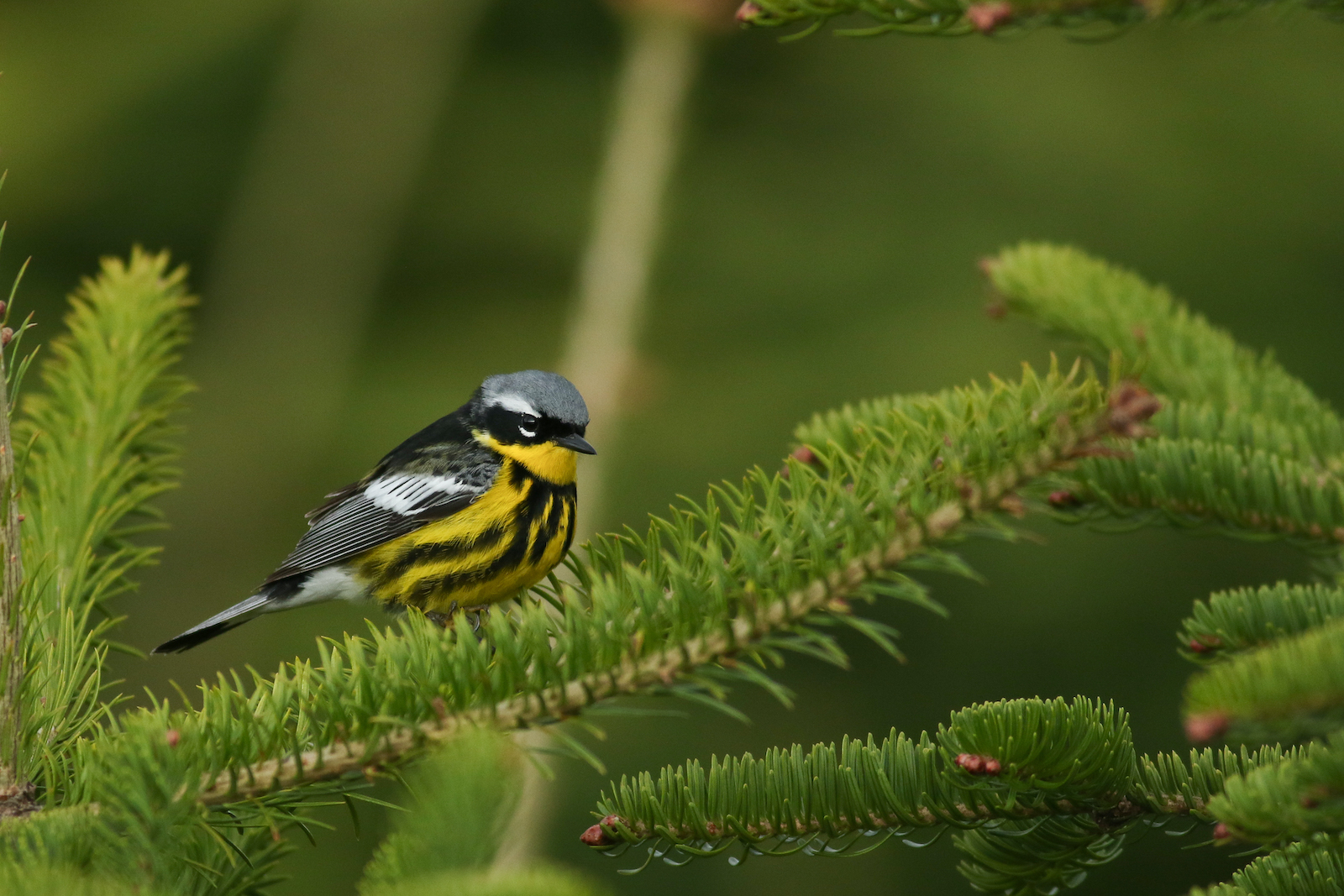As spring arrives in the Northern Hemisphere, many birds make long-distance journeys, some traveling tens of thousands of miles between their wintering and breeding grounds. What’s more impressive—many of these journeys occur entirely at night. Migrating at night has advantages including fewer predators, calmer winds, and cooler temperatures. However, migrating at night also comes with its own set of navigational hazards, especially from light pollution in urban areas.
Forty-seven species of North American warblers—members of the scientific family Parulidae—migrate at night. Warblers that migrate along the same routes sometimes move together in mixed-species flocks and give simple vocalizations known as “flight calls” as they travel. One hypothesis is that warbler species that migrate together share similar flight calls, allowing them to more easily communicate with each other. According to this hypothesis, individuals that can recognize the calls of other species in their flock have a higher chance of finding food or good places to rest and are more likely to survive the challenges of migration.

Magnolia Warbler © Jonathan Eckerson / Macaulay Library
Testing this hypothesis has been difficult, until now. The advanced eBird Status and Trends models, created by the eBird Science team using eBird observations, show where and how many warblers are migrating on a weekly basis with incredible detail. In a recent publication, PhD candidate Zach Gayk and a team of researchers at the University of Windsor in Ontario, Canada used these state-of-the-art relative abundance estimates to determine if warbler species with similar-sounding flight calls really do migrate together.
An investigation of this detail was previously not possible without the cutting-edge eBird Status and Trends data products. Although the ranges of many warblers generally overlap during migration, differences in the number of individuals of each species traveling at any given time can significantly impact the composition of mixed-species flocks, making it hard to determine which warblers actually share migratory journeys. The eBird Status and Trend’s high-resolution predictions of abundance at weekly intervals over the entire western hemisphere are necessary to truly understand if, where, and when different warbler species co-occur.
Gayk and his co-authors focused on 36 species of North American warblers with well-described flight calls. They examined whether warblers with similar-sounding flight calls also share other characteristics such as evolutionary history, migration route length, or wintering, breeding, or migration ranges. eBird Status and Trends provided critical information about the degree of population overlap between warbler species each week of the migration period.


eBird Status and Trends abundance animations show that populations of Blackburnian Warblers (top) and Magnolia Warblers (bottom) overlap during spring migration. These two species also share similar-sounding flight calls.
The researchers found that similar-sounding warblers tend to be closely related species that breed at the same latitudes and have similar migration routes. Overlapping migration routes, as measured with eBird Status and Trends data, was one of the top predictors of flight call similarity among North American warblers. Gayk and his co-authors concluded that having similar-sounding flight calls may help individual warblers communicate with other birds traveling the same route at the same time, including members of other species. More investigation is needed to determine if this is true for other migratory species that form mixed flocks such as sparrows and buntings.
“This study is a really exciting example of using the incredible detail available in the eBird Status and Trends relative abundance products,” said Tom Auer, geospatial data science team lead. “Research that needs a high amount of taxonomic, spatial, and temporal detail, such as this work, can really benefit from leveraging these data products. Information like this doesn’t really exist anywhere else and now it can help power research in ways that weren’t possible before.” And your eBird observations help power state-of-the-art abundance and distribution models that advance our understanding of migration.

